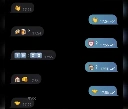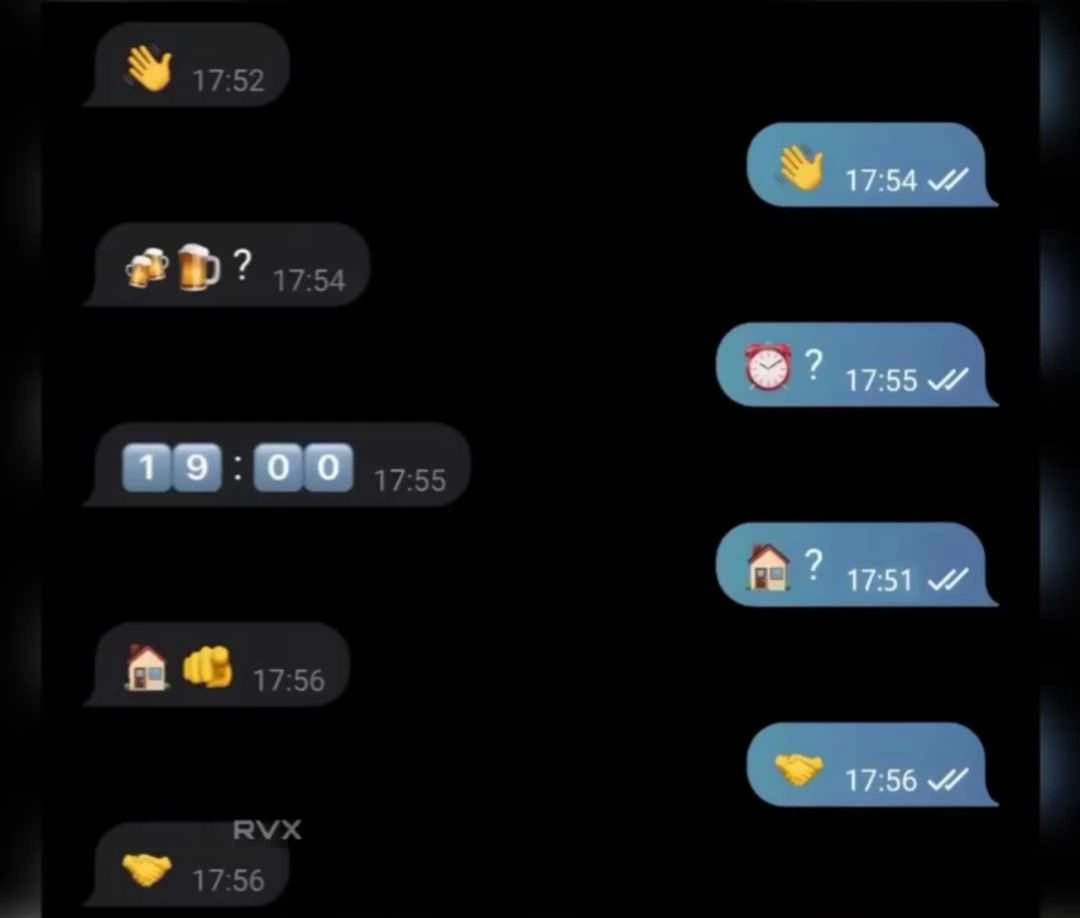Emojiis are hieroglyphics
Emojiis are hieroglyphics


Emojiis are hieroglyphics


You're viewing a single thread.
If you exclude 'emojis' which are literally just picture forms of characters in existing languages:
Technically, they're pictoglyphs, not hieroglyphs.
Emojis represent the literal thing they portray (pictogram), the word associated with that literal thing (logogram), and, to varying degrees to different people, represent other related concepts and associated ideas (ideogram).
Hieroglyphs do all of that, but additionally also represent spoken syllables and alphabetic characters, and follow a concrete syntax amd grammar system that allows for a much more extensive vocabulary, as well as more complex sentence structures than emojis, which have far more certain and unambiguous meanings.
As an example of that, try to represent my previous sentence using only emojis, and then present that string of emojis to a random person you know and ask them what it means.
Basically, hieroglyphs constitute an actual language, purely using emojis is playing pictionary as a means of communication.
🍑🍆 <- ideograms?
You got it!
A pictoglyph being used to represent something associated with the actual thing being represented, falls under ideogram.
But when your grandma sends a shopping list to you in emoji form, she probably means it as a pictogram.
... Hopefully.
Listen guys, this Lemmy user is a huge nerd!
/s
Thank you, I learnt a lot.
Don't you mean 👆🤓?
Akhchually, the emoji sequence is ☝️🤓
𓋹𓍑𓋴
Wait, let me consult my pocket ASCII chart to check if I've been insulted.
Okay, I tried it but didn't work. 𓋴 is translated to S or Z. But others didn't work. Both charmap and online failed.
Ankh wedja seneb (𓋹𓍑𓋴 ꜥnḫ wḏꜢ snb) is an Egyptian phrase which often appears after the names of pharaohs, in references to their household, or at the ends of letters. The formula consists of three Egyptian hieroglyphs without clarification of pronunciation, making its exact grammatical form difficult to reconstruct. It may be expressed as "life, prosperity, and health", but Alan Gardiner proposed that they represented verbs in the stative form:[citation needed] "Be alive, strong, and healthy".
from wikipedia
Thanks!
Functionally: Live long, and prosper.
Or I guess: 🖖
lol
There basically are no proper Hieroglyph to English translators online.
There are only trans literators.
...
Anyway, back to the hieroglyphs: in this instance, the 3 characters are not to be interpreted as letters or syllables, but as concepts that each character embodies.
As shneancy has explained its literally :
Ankh (Life) Wedja (Strength) Seneb (Health)
These characters are often found together after pharoah's personal and family/house names in inscriptions and stelle.
With what little, extremely little I know of actual hieroglyphic grammar, it seems that a 'phrase' like this at the end of a sentence or name basically modifies the subject of the sentence, in a permanent, essential sense.
Hierogylphic grammar is still not perfectly understood though... its not exactly clear how the exact phrasing would work.
So it could mean something like:
'May (subject) have everlasting life, unyielding strength, and forever be in good health."
Or it may also be declaritive:
'The immortal, omnipotent and robust (subject).'
... basically I'm trying to say 'have a doubleplus good one' or 'live long and prosper' in hieroglyphic, but i fucked up the grammar by not putting your name in hieroglyphs inside a royal cartouche for maximum praise and respect, haha.
Sadly I don't think unicode supports drawing a cartouche around a set of glyphs, haha.
ゴースト Go--TsuTo
ス is su
ツ is tsu
Ah, you're right!
24 hrs w/o sleep, haha.
I want to give you a mix of Redbull/Espresso and invite you to a Egyptology conference as a keynote speaker. And I mean it as a compliment.
On a serious note, I only found English to hieroglyphics translator but not the other way. This explains it.
Hah, thanks, but I am absurdly unqualified to be a keynote speaker, thats the job of actual ancient linguists with PhDs and what not... I'm just a nerd that watches actual ancient linguistic scholars like Josh Bowman and Kipp Davis, and maybe at best understands some of the basics of an undergrad in that field.
They both have youtube channels and do interviews and discsussions with other ancient history/religion themed youtubers, if you're interested.
What does that say? I don't read ancient foreign.
hll👋
hll👋
brs🍻🍺?
tm⏰️?
19:00☀️🌙
hm🏠?
rhm🫵🏠
dl🤝
dl🤝
fixed it